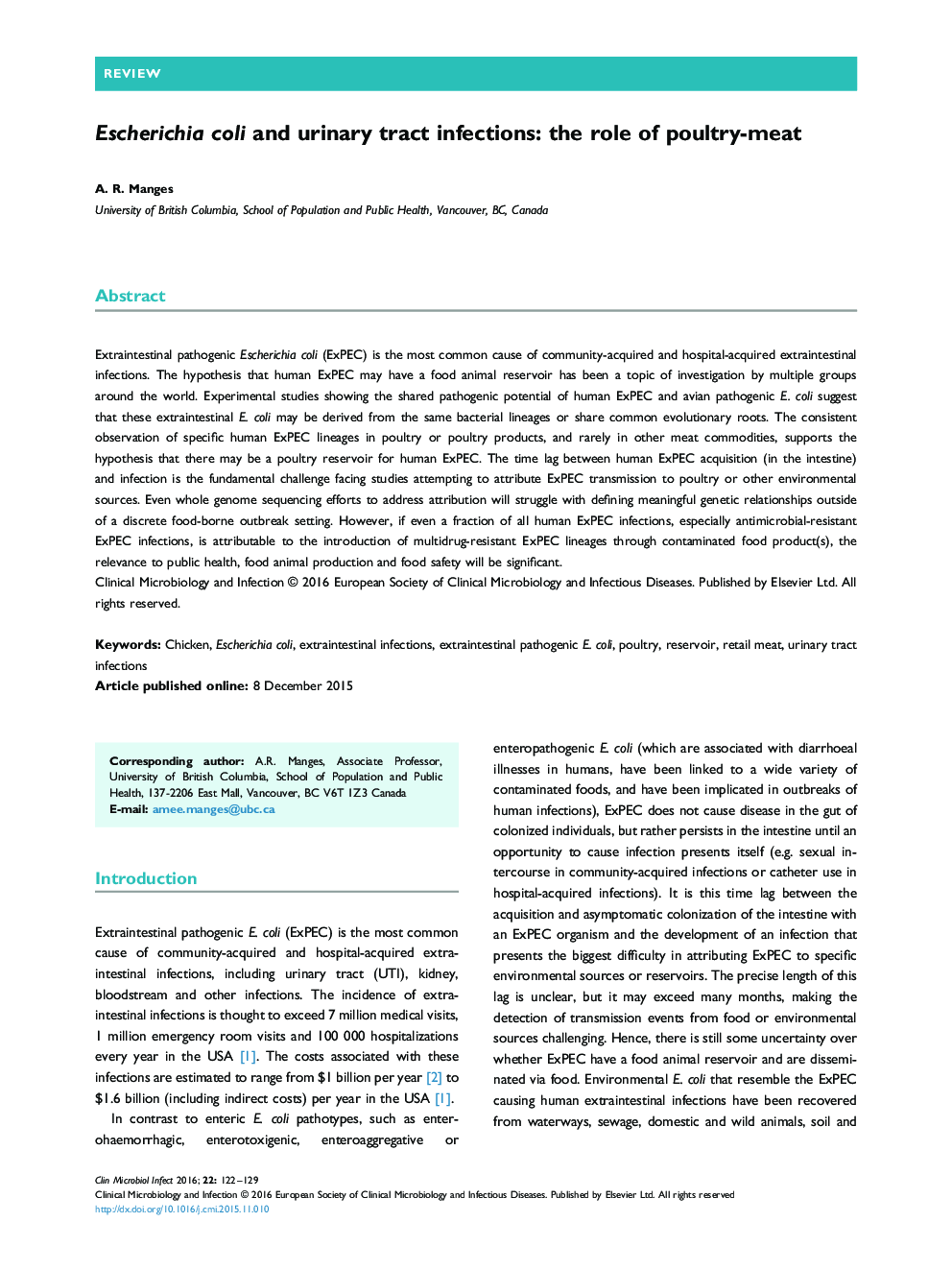| کد مقاله | کد نشریه | سال انتشار | مقاله انگلیسی | نسخه تمام متن |
|---|---|---|---|---|
| 6129016 | 1222146 | 2016 | 8 صفحه PDF | دانلود رایگان |
عنوان انگلیسی مقاله ISI
Escherichia coli and urinary tract infections: the role of poultry-meat
ترجمه فارسی عنوان
اشرشیاکلی و عفونت های دستگاه ادراری: نقش مرغ گوشتی
دانلود مقاله + سفارش ترجمه
دانلود مقاله ISI انگلیسی
رایگان برای ایرانیان
کلمات کلیدی
موضوعات مرتبط
علوم زیستی و بیوفناوری
ایمنی شناسی و میکروب شناسی
میکروب شناسی
چکیده انگلیسی
Extraintestinal pathogenic Escherichia coli (ExPEC) is the most common cause of community-acquired and hospital-acquired extraintestinal infections. The hypothesis that human ExPEC may have a food animal reservoir has been a topic of investigation by multiple groups around the world. Experimental studies showing the shared pathogenic potential of human ExPEC and avian pathogenic E. coli suggest that these extraintestinal E. coli may be derived from the same bacterial lineages or share common evolutionary roots. The consistent observation of specific human ExPEC lineages in poultry or poultry products, and rarely in other meat commodities, supports the hypothesis that there may be a poultry reservoir for human ExPEC. The time lag between human ExPEC acquisition (in the intestine) and infection is the fundamental challenge facing studies attempting to attribute ExPEC transmission to poultry or other environmental sources. Even whole genome sequencing efforts to address attribution will struggle with defining meaningful genetic relationships outside of a discrete food-borne outbreak setting. However, if even a fraction of all human ExPEC infections, especially antimicrobial-resistant ExPEC infections, is attributable to the introduction of multidrug-resistant ExPEC lineages through contaminated food product(s), the relevance to public health, food animal production and food safety will be significant.
ناشر
Database: Elsevier - ScienceDirect (ساینس دایرکت)
Journal: Clinical Microbiology and Infection - Volume 22, Issue 2, February 2016, Pages 122-129
Journal: Clinical Microbiology and Infection - Volume 22, Issue 2, February 2016, Pages 122-129
نویسندگان
A.R. Manges,
